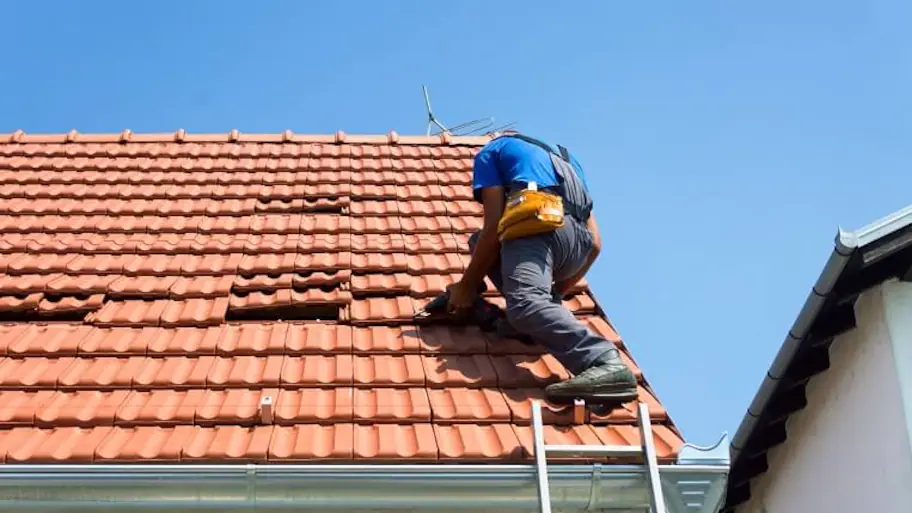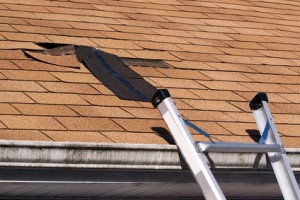Oahu Roofing: Reliable Roofing Solutions for Homes and Companies
Comprehending the Different Kinds Of Roofings: A Comprehensive Overview for Homeowners
With a range of choices-- ranging from the standard gable to the modern level-- each type provides one-of-a-kind benefits and challenges that should straighten with the home owner's certain requirements and ecological considerations. As we discover the intricacies of different roofing system types, it ends up being noticeable that one size does not fit all; the right selection might surprise you.
Saddleback Roof
Gable roofings, characterized by their triangular shape, are amongst one of the most preferred roof designs due to their simplicity and performance in losing water and snow. This design includes two sloping sides that satisfy at a ridge, permitting for effective water drainage and minimizing the risk of water build-up. The high pitch frequently related to gable roof coverings enhances their capability to handle hefty rainfall, making them ideal for various environments.
Along with their functional advantages, gable roofing systems provide aesthetic flexibility. They can be adapted to various building styles, from traditional to contemporary homes. The layout can also suit extra functions such as dormer windows, which improve natural light and ventilation in the attic space.
Furthermore, gable roofs offer adequate room for insulation, adding to power effectiveness. Home owners can pick from a range of roof products, including asphalt roof shingles, metal, and floor tiles, further boosting personalization choices.
Regardless of their advantages, saddleback roofs may require added support in areas susceptible to high winds or hefty snowfall. On the whole, the gable roof stays a favored choice due to its blend of capability, toughness, and visual allure.
Flat Roofs
Flat roofs are often acknowledged for their minimal design and functional applications, especially in commercial and industrial setups (oahu roofing). These roofs feature a horizontal or nearly straight surface, which permits very easy building and versatile room usage. While they may lack the visual appeal of pitched roofing systems, level roofs use many advantages, particularly in metropolitan environments where making best use of room is crucial
One of the key benefits of flat roof coverings is their access. Property owners can make use of the roof area for different objectives, such as roof yards, terraces, or solar panel installments. Additionally, level roof coverings are commonly a lot more cost-efficient to maintain and mount compared to their sloped counterparts, as they call for fewer materials and labor.
However, level roof coverings do existing particular challenges. Proper water drainage is vital to prevent water pooling, which can result in leakages and architectural damages. Hence, choosing top notch waterproofing materials and routine inspections are critical for making certain long life. Typical materials utilized for flat roofings consist of built-up roofing (BUR), modified bitumen, and single-ply membrane layers, each offering unique advantages. Overall, level roof coverings function as a adaptable and useful selection for many house owners and organizations alike.
Hip Roofing Systems
Hip roofing systems are characterized by their sloped sides that assemble on top, creating a ridge. This layout is distinctive from saddleback roofs, as all four sides of a hip roofing system slope downwards towards the wall surfaces, Homepage supplying a much more steady structure. The angle of the inclines can differ, permitting adaptability in architectural visual appeals and functionality.
Among the main advantages of hip roofs is their ability to hold up against hefty winds and unfavorable weather problems. The sloped surface areas allow better water drain, Visit Website minimizing the danger of leakages and water damages. In addition, hip roofing systems provide increased attic area, which can be utilized for storage space and even exchanged livable locations.
Nevertheless, constructing a hip roof covering can be much more pricey and complex than less complex roofing system types, such as gable roofing systems. The added material and labor entailed in producing the inclines and making certain appropriate architectural integrity can cause higher costs. Despite these downsides, many home owners favor hip roofs for their longevity, aesthetic allure, and potential for energy effectiveness.
Mansard Roofing Systems
Mansard roof coverings, typically identified by their unique four-sided style, function 2 inclines on each side, with the lower slope being steeper than the top. This building design, stemming from France in the 17th century, is not just cosmetically appealing however functional, as it optimizes the useful space in the upper floors of a building. The high lower slope enables more headroom, making it an ideal option for loft spaces or attic rooms, which can be exchanged living rooms.
Mansard roof coverings are characterized by their adaptability, suiting various building styles, from standard to modern-day. They can be created with various products, consisting of asphalt tiles, slate, or steel, providing homeowners with a range of choices to fit their preferences and budget plans. Furthermore, the design enables the combination of dormer windows, improving all-natural light and air flow in the top levels.
Nevertheless, it is important to think about the prospective disadvantages. Mansard roofings may require more upkeep as a result of the intricacy of their style, and their steep inclines can be testing for snow and rain overflow. In general, mansard roofs combine style with functionality, making them a preferred selection among home owners looking for unique building functions.
Dropped Roofs
As homeowners significantly seek simplicity and functionality in their architectural designs, look at this web-site lost roofings have actually become a prominent selection. Defined by a single sloping airplane, a shed roofing system presents a minimal aesthetic that enhances various home designs, from modern to rustic.
One of the key advantages of a shed roofing is its straightforward building, which frequently converts to reduce labor and product prices. This design enables for reliable water drainage, lowering the risk of leaks and water damages. In addition, the upright slope offers enough space for skylights, enhancing natural light within the inside.
Shed roofings additionally offer flexibility in terms of use. They can be effectively integrated into additions, garages, or outside structures like sheds and structures. Moreover, this roof covering style can accommodate different roofing products, consisting of metal, asphalt tiles, or also green roof coverings, aligning with green campaigns.
However, it is necessary to consider local environment problems, as hefty snow lots might require modifications to the roof's angle or structure. Overall, lost roofs offer a sensible and visually pleasing choice for property owners wanting to make best use of capability without endangering design.
Final Thought


Gable roofings, identified by their triangular shape, are among the most preferred roof covering styles due to their simplicity and effectiveness in dropping water and snow. oahu roofing. The high pitch frequently associated with gable roofings boosts their ability to deal with heavy rainfall, making them suitable for different environments
While they may lack the visual charm of pitched roofs, level roof coverings provide numerous benefits, specifically in metropolitan settings where taking full advantage of room is crucial.
